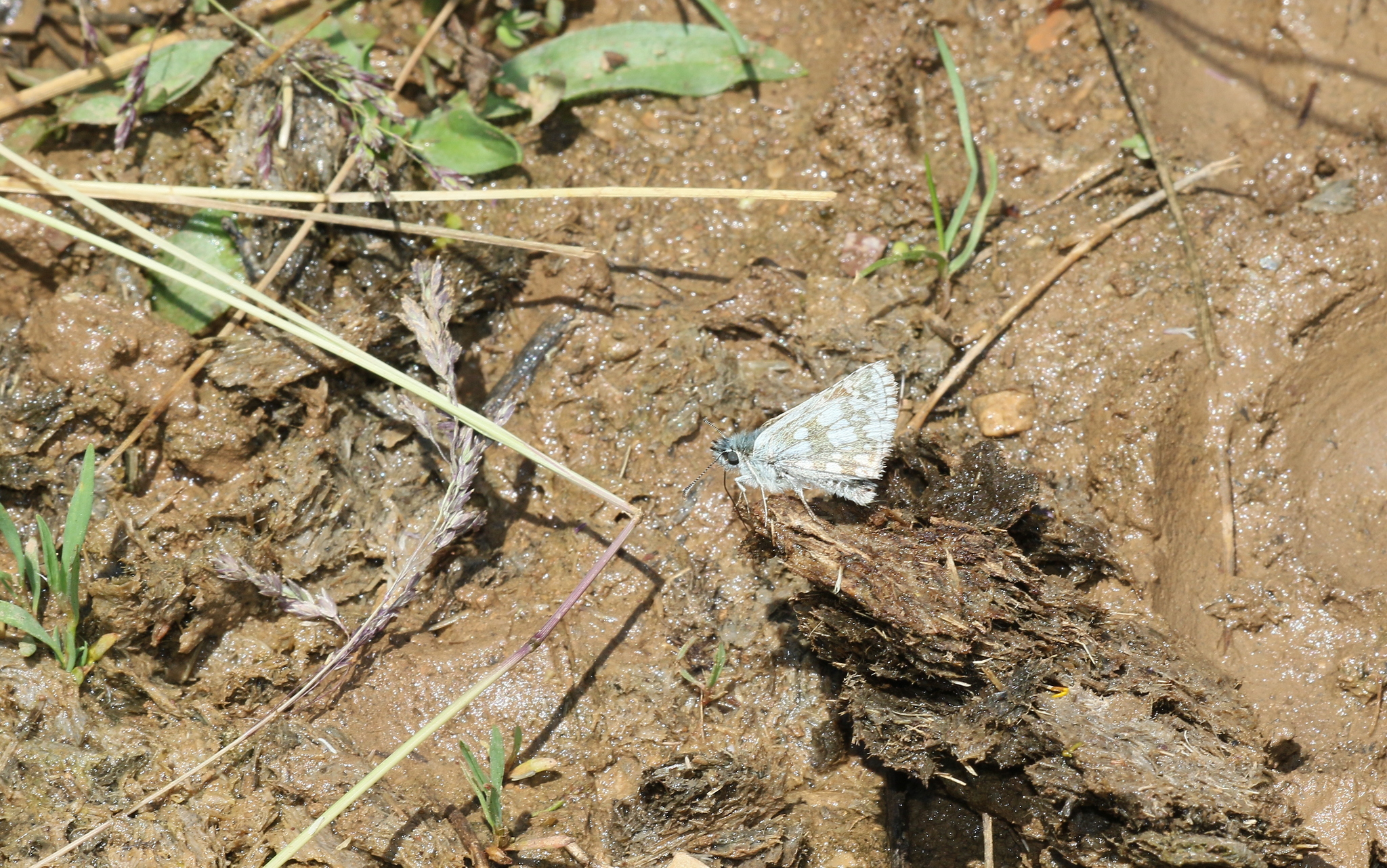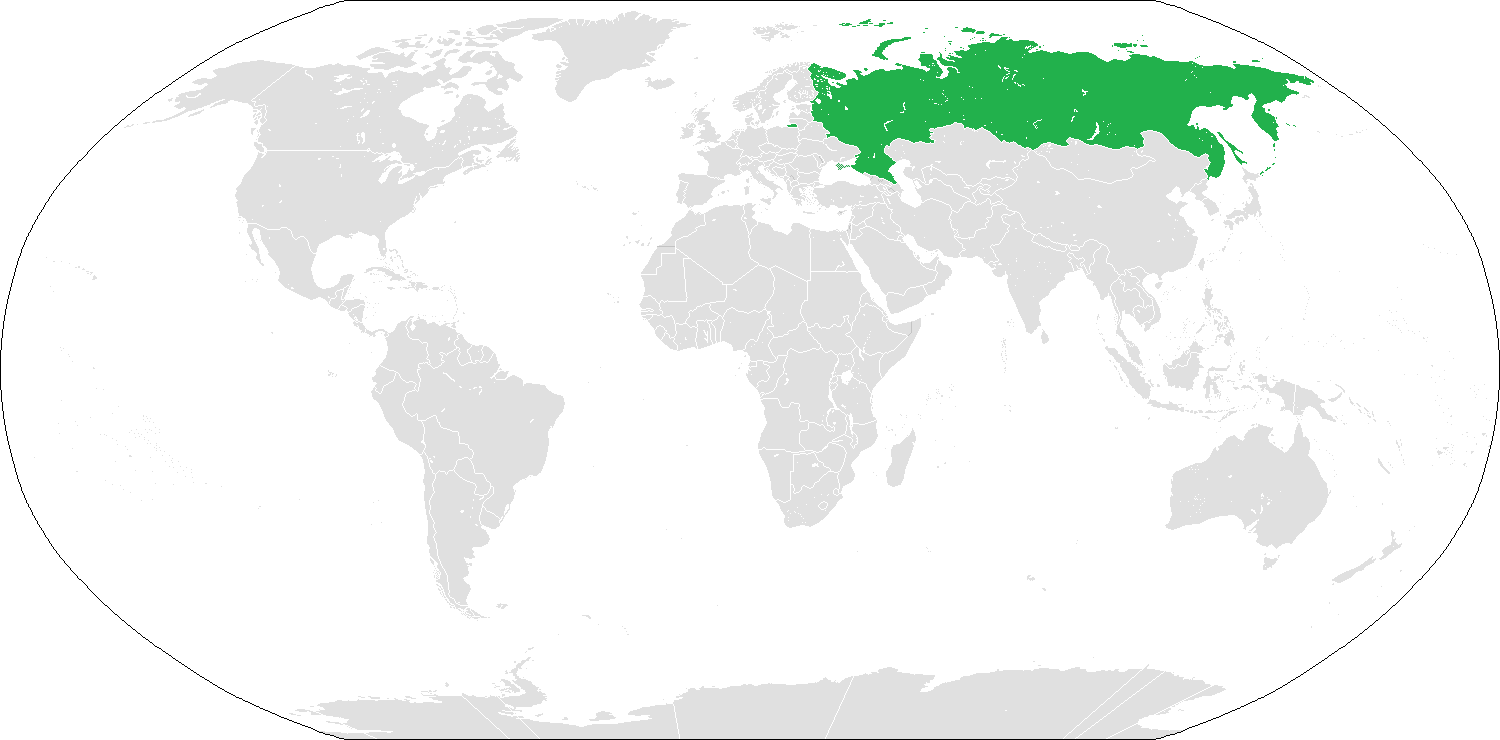|
Pyrgus Speyeri
''Pyrgus speyeri '' is a small butterfly found in the East Palearctic The Palearctic or Palaearctic is the largest of the eight biogeographic realms of the Earth. It stretches across all of Eurasia north of the foothills of the Himalayas, and North Africa. The realm consists of several bioregions: the Euro-Sibe ... (Sayan, Transbaikalia, Amur, Ussuri) that belongs to the skippers family. Description from Seitz H. Speyeri Stgr. (85 g). On both sides darker than the preceding ( H. carthami), the spots of the forewing above smaller; the first spot of the median band of the hindwing beneath, situated in interspace 6, is absent, being sometimes represented by an indistinct smear. Otherwise similar to '' serrutulae''. Amurland, Ussuri, and Dauria. — In ''seitzi'' form nov. (85 g). of which 1 have a female from Sajan, the upperside of the wings is uniformly black, the forewing bearing an indistinct grey diffuse discocellular half-moon. Fringes white, interrupted by conspicuou ... [...More Info...] [...Related Items...] OR: [Wikipedia] [Google] [Baidu] |
Adalbert Seitz
Friedrich Joseph Adalbert Seitz, (24 February 1860 in Mainz – 5 March 1938 in Darmstadt) was a German physician and entomologist who specialised in Lepidoptera. He was a director of the Frankfurt zoo from 1893 to 1908 and is best known for editing the multivolume reference on the butterflies and larger moths of the world ''Die Gross-Schmetterlinge der Erde'' which continued after his death. Biography Seitz was born in Mainz and went to school in Aschaffenburg, Darmstadt and Bensheim. He studied medicine from 1880 to 1885 and then zoology at Giessen. His doctorate was on the protective devices of animals. He worked as an assistant in the maternity hospital of the University of Giessen and then worked as a ship's doctor from 1887, travelling to Australia, South America and Asia. He began to collect butterflies on these travels. In 1891 he habilitated in zoology with a thesis on the biology of butterflies from the University of Giessen. In 1893 he took up a position as a direct ... [...More Info...] [...Related Items...] OR: [Wikipedia] [Google] [Baidu] |
Otto Staudinger
Otto Staudinger (2 May 1830 – 13 October 1900) was a German entomologist and a natural history dealer considered one of the largest in the world specialising in the collection and sale of insects to museums, scientific institutions, and individuals. Life Staudinger was born in Groß Wüstenfelde, Mecklenburg-Schwerin, from a Bavarian family on his father's side. His grandfather was born near Ansbach and came to Holstein at the end of the 18th century where Staudinger's father was born in Groß Flottbeck in 1799. His mother, a born Schroeder, was from Mecklenburg, born in Putzar at the Count of Schwerin's estate in 1794. At the time of Otto Staudinger's birth in 1830 his father was the tenant of the Rittergut Groß Wüstenfelde. At the age of six or seven Otto was introduced into entomology by his private tutor Wagner who collected beetles. In the summer of 1843 his father purchased the Rittergut Lübsee near Güstrow where Otto – now under the instruction of tutor Herman ... [...More Info...] [...Related Items...] OR: [Wikipedia] [Google] [Baidu] |
Butterfly
Butterflies are insects in the macrolepidopteran clade Rhopalocera from the order Lepidoptera, which also includes moths. Adult butterflies have large, often brightly coloured wings, and conspicuous, fluttering flight. The group comprises the large superfamily Papilionoidea, which contains at least one former group, the skippers (formerly the superfamily "Hesperioidea"), and the most recent analyses suggest it also contains the moth-butterflies (formerly the superfamily "Hedyloidea"). Butterfly fossils date to the Paleocene, about 56 million years ago. Butterflies have a four-stage life cycle, as like most insects they undergo complete metamorphosis. Winged adults lay eggs on the food plant on which their larvae, known as caterpillars, will feed. The caterpillars grow, sometimes very rapidly, and when fully developed, pupate in a chrysalis. When metamorphosis is complete, the pupal skin splits, the adult insect climbs out, and after its wings have expanded and dried, it fli ... [...More Info...] [...Related Items...] OR: [Wikipedia] [Google] [Baidu] |
Palearctic
The Palearctic or Palaearctic is the largest of the eight biogeographic realms of the Earth. It stretches across all of Eurasia north of the foothills of the Himalayas, and North Africa. The realm consists of several bioregions: the Euro-Siberian region; the Mediterranean Basin; the Sahara and Arabian Deserts; and Western, Central and East Asia. The Palaearctic realm also has numerous rivers and lakes, forming several freshwater ecoregions. The term 'Palearctic' was first used in the 19th century, and is still in use as the basis for zoogeographic classification. History In an 1858 paper for the ''Proceedings of the Linnean Society'', British zoologist Philip Sclater first identified six terrestrial zoogeographic realms of the world: Palaearctic, Aethiopian/ Afrotropic, Indian/ Indomalayan, Australasian, Nearctic, and Neotropical. The six indicated general groupings of fauna, based on shared biogeography and large-scale geographic barriers to migration. Alfre ... [...More Info...] [...Related Items...] OR: [Wikipedia] [Google] [Baidu] |
Hesperiidae
Skippers are a family of the Lepidoptera (moths and butterflies) named the Hesperiidae. Being diurnal, they are generally called butterflies. They were previously placed in a separate superfamily, Hesperioidea; however, the most recent taxonomy places the family in the superfamily Papilionoidea, the butterflies. They are named for their quick, darting flight habits. Most have their antenna tips modified into narrow, hook-like projections. Moreover, skippers mostly have an absence of wing-coupling structure available in most moths. More than 3500 species of skippers are recognized, and they occur worldwide, but with the greatest diversity in the Neotropical regions of Central and South America.Ackery et al. (1999) Description and systematics Traditionally, the Hesperiidae were placed in a monotypic superfamily Hesperioidea, because they are morphologically distinct from other Rhopalocera (butterflies), which mostly belong to the typical butterfly superfamily Papilionoidea. ... [...More Info...] [...Related Items...] OR: [Wikipedia] [Google] [Baidu] |
Safflower Skipper
The safflower skipper (''Pyrgus carthami'') is a species of skipper butterfly (family Hesperiidae). Description The wingspan is 30–34 mm, the female being on average slightly larger than the male. This species is typical of the genus and it is the largest European ''Pyrgus''. The upperside of the wings is greyish brown. On the upperside of the forewing there are a basal grey and white fringe of hair and variables quadrangular white patches, with a cell spot in the form of a Greek capital sigma (Σ). The upperside hindwing shows a submarginal line of white spots and a postdiscal line of oval whitish spots. The underside of the forewings is lighter, greenish brown with white markings, while in the hindwings there are large brown and white patches bordered with dark grey and a white submarginal area. The caterpillar is mainly olive brown to beige with a blackish chest. This species is rather similar to ''Pyrgus alveus'', ''Pyrgus armoricanus'', ''Pyrgus serratulae'' and ''Py ... [...More Info...] [...Related Items...] OR: [Wikipedia] [Google] [Baidu] |
Olive Skipper
The Olive Skipper (''Pyrgus serratulae'') is a species of skipper (family Hesperiidae). Description This is a relatively distinctive species by the standards of the genus, the upperside tending to be plainer than most of its congeners with only tiny white marks on the forewings and almost unmarked on the hindwings. The underside is usually mostly olive-green with paler markings. An oval basal spot on the underside of the hind wing is a mostly well-developed feature. Alpine individuals often have a strong, almost completely reduced pattern of bright points on the upper side of the wing. The wingspan is 24–28 mm which means that ''Pyrgus serratulae'' is a medium-sized ''Pyrgus'' species. Basically, there is a great possibility of confusion with butterflies of the ''Pyrgus alveus'' complex, which can also occur syntopically with ''P. serratulae'', as well as the other species of the genus ''Pyrgus''. Safe separation is possible through the genitals. Range It is a species of th ... [...More Info...] [...Related Items...] OR: [Wikipedia] [Google] [Baidu] |
List Of Butterflies Of Russia
This is a list of butterflies of Russia. About 540 species are known from Russia. The butterflies (mostly diurnal) and moths (mostly nocturnal) together make up the taxonomic order Lepidoptera. The history of lepidopterology in Russia is connected with the organization of the first Russian museum The Kunstkamera established by Peter the Great in 1714. In 1717, he purchased the collection of Albert Seba, a merchant from Amsterdam, for the new museum. In 1832 the Zoological Museum of the Imperial Academy of Sciences was separated as a distinct institution which in 1931 became the Zoological Institute of the USSR Academy of Sciences (since 1991 — Russian Academy of Sciences). In 1859, the then director of the Zoological Museum, Johann Friedrich von Brandt was one of the founders of the Russian Entomological Society in 1859 and in St. Petersburg . Other founders were Karl Ernst von Baer, Ya. A. Kushakevich, Colonel Alexander Karlovich Manderstern, Alexander von Middendorff a ... [...More Info...] [...Related Items...] OR: [Wikipedia] [Google] [Baidu] |
Pyrgus
''Pyrgus'' is a genus in the skippers butterfly family, Hesperiidae, known as the grizzled skippers. The name "checkered" or "chequered skipper" may also be applied to some species, but also refers to species in the genera ''Burnsius'' and ''Carterocephalus''. They occur in the Holarctic with an additional group of species extending to the Neotropic. In 2019, most of the species of ''Pyrgus'' found in the North, Central, or South America were moved to the genera ''Burnsius'', '' Chirgus'', and ''Heliopetes''. The remaining ''Pyrgus'' species found in the New World are ''Pyrgus centaureae'', ''ruralis'', ''scriptura'', and ''xanthus''. Species These species belong to the genus ''Pyrgus'': * ''Pyrgus accretus'' (Verity, 1925) * '' Pyrgus alpinus'' Erschoff, 1874 * ''Pyrgus alveus'' (Hübner, 1803) (large grizzled skipper) * ''Pyrgus andromedae'' (Wallengren, 1853) (Alpine grizzled skipper) * ''Pyrgus armoricanus'' (Oberthur, 1910) (oberthür's grizzled skipper) * '' Pyrgus ... [...More Info...] [...Related Items...] OR: [Wikipedia] [Google] [Baidu] |
_male_in_flight.jpg)



